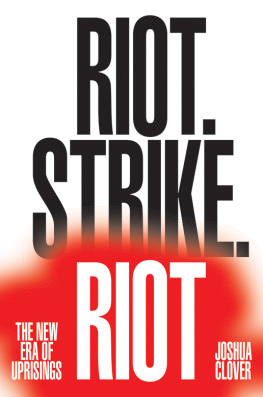BLOCKADES OR BREAKTHROUGHS?
McGill-Queens University Press 2014
ISBN 978-0-7735-4390-4 (cloth)
ISBN 978-0-7735-4391-1 (paper)
ISBN 978-0-7735-9612-2 (ePDF)
ISBN 978-0-7735-9613-9 (ePUB)
Legal deposit fourth quarter 2014
Bibliothque nationale du Qubec
Printed in Canada on acid-free paper that is 100 % ancient forest free (100 % post-consumer recycled), processed chlorine free
This book has been published with the help of a grant from the Canadian Federation for the Humanities and Social Sciences, through the Awards to Scholarly Publications Program, using funds provided by the Social Sciences and Humanities Research Council of Canada.
McGill-Queens University Press acknowledges the support of the Canada Council for the Arts for our publishing program. We also acknowledge the financial support of the Government of Canada through the Canada Book Fund for our publishing activities.
Library and Archives Canada Cataloguing in Publication
Blockades or breakthroughs?: Aboriginal peoples confront the Canadian state/edited by Yale D. Belanger and P. Whitney Lackenbauer.
Includes bibliographical references and index.
Issued in print and electronic formats.
ISBN 978-0-7735-4390-4 (bound). ISBN 978-0-7735-4391-1 (pbk.).
ISBN 978-0-7735-9612-2 (ePDF). ISBN 978-0-7735-9613-9 (ePUB)
1. Native peoples Canada Government relations Case studies. 2. Native peoples Canada Claims Case studies. 3. Direct action Canada Case studies. 4. Government, Resistance to Canada Case studies. 5. Canada Ethnic relations Case studies. I. Lackenbauer, P. Whitney, author, editor II. Belanger, Yale Deron, 1968, author, editor
E78. C2B56 2014 323.1197'071 C2014-904854-8
C2014-904855-6
This book was typeset by Interscript.
Acknowledgments
This project began in 2004 after a chance meeting of the editors at the University of Saskatchewan. Whitney was completing a postdoctoral fellowship with Professor Jim Miller, while three doors down the hallway in Kirk Hall, Yale was working as an assistant professor in the Political Science Department. For the next four months, these offices incubated long discussions, which generated the idea for this book.
During the next few years, the project gathered momentum despite moves to new positions Whitney to St Jeromes University in the University of Waterloo and Yale to the University of Lethbridge. The contributors signed on in 2007, and the manuscript eventually found a home with McGill-Queens University Press under the keen eye of Mark Abley, whom we thank wholeheartedly for believing in this project. We also owe special gratitude to the seven authors whose contributions appear in this book for their fine work, for their openness to reworking their chapters to fit with our vision, and above all else, for their patience. Thanks to the anonymous peer reviewers for the press and to Timothy Winegard and Jennifer Arthur-Lackenbauer for substantive suggestions that shaped and improved this volume. We hope that this book, in its published form, meets their expectations. Our sincerest appreciation also goes to Robert Lewis for his meticulous copyediting, which greatly improved the text. Yale would like to thank Gabrielle Weasel Head and Madeleine Baldwin (Lethbridge) for their assistance in reformatting citations, resolving several critical copyediting issues, and fact checking as this project wound its way into publication. He also expresses his gratitude to Concordia Universitys First Peoples Studies Program and to the University of Ottawa for their collective invitation to speak, respectively, in the lecture series In Collaboration with Dialogue and in the Aboriginal Conference Series in October 2012. Panel moderators and audience members at both talks generated important questions and comments, which informed this books newly crafted introduction. We apologize to anyone whom we may have inadvertently overlooked.
This work could not have been produced without the financial support of the Federation for the Humanities and Social Sciences Awards to Scholarly Publication Program, a University of Lethbridge Research Dissemination Grant, and a St Jeromes University Aid to Scholarly Publication Grant. This book also benefited from a University of Lethbridge study leave grant and a St Jeromes University faculty research grant.
Finally, we extend our special thanks to Tammie-Jai Belanger and Jennifer Arthur-Lackenbauer. What can we say that has not already been said (or written, for that matter)? Throughout the writing and publication process, they both remained a source of inspiration; their encouragement and support enabled the completion of this work.
Locations of the blockades and occupations covered in this book. Maps have been drawn by Jennifer Arthur-Lackenbauer unless otherwise stated. Please note that all maps are for illustrative purposes only.
CHAPTER 1 During the Summer of Discontent in 1922, the Caldwell First Nation the only recognized Indian band in southern Ontario without a reserve base claimed Point Pelee and attempted to occupy an area close to the boundary of Point Pelee National Park.
CHAPTER 2 Map of Haida Gwaii showing key locations in the Haida action on Lyall Island and environmental activism aimed to end clear-cut logging on South Moresby.
CHAPTER 3 Map depicting the contested territory claimed by the Lubicon Lake Cree in northern Alberta, as well as reserve areas proposed in 1938 and 1988.
CHAPTER 4 The Goose Bay low-level flying controversy involved Innu and Inuit lands in Labrador and eastern Quebec.
CHAPTER 5 The Oka Crisis of 1990 featured an eleven-week armed standoff between Mohawk Warriors, the Quebec provincial police, and the Canadian Forces on the Kanesatake and Kahnawake Mohawk territories.
CHAPTER 6 In 1990, the Lonefighters established a blockade to divert the Oldman River on the Peigan reserve of the Piikani Nation of southern Alberta.























